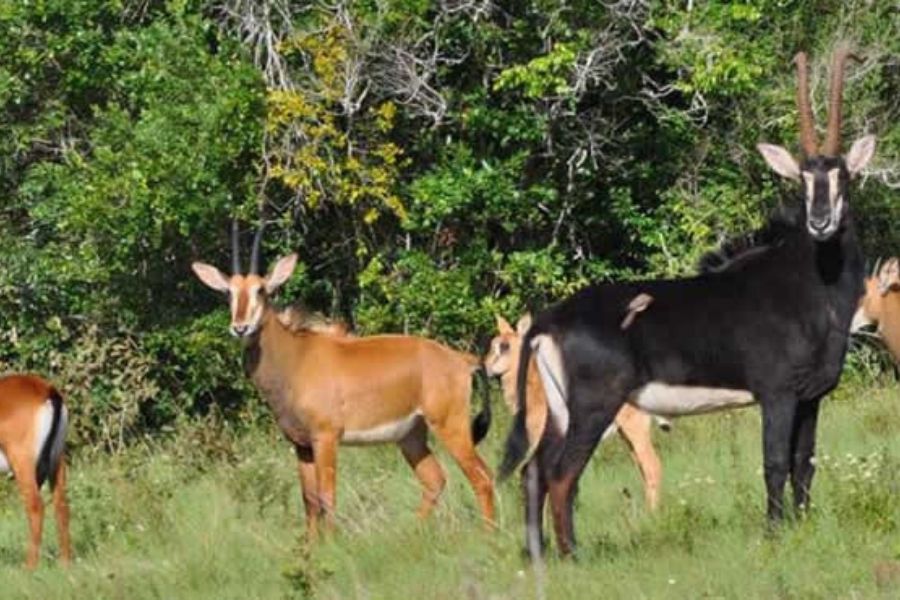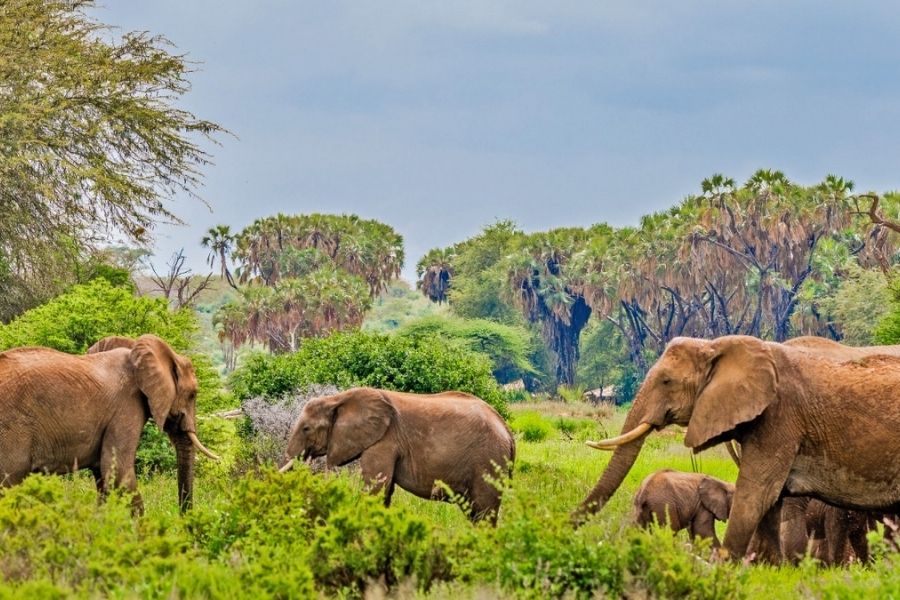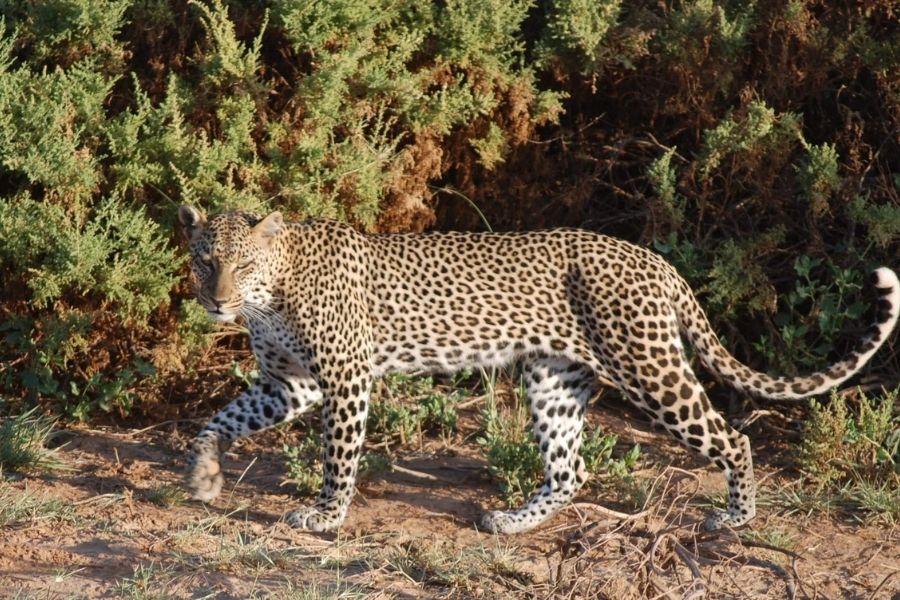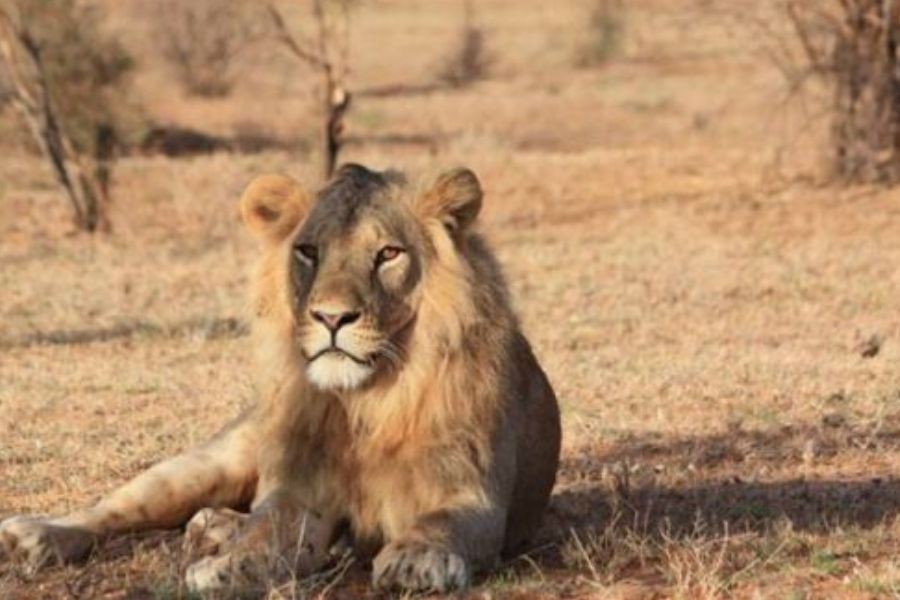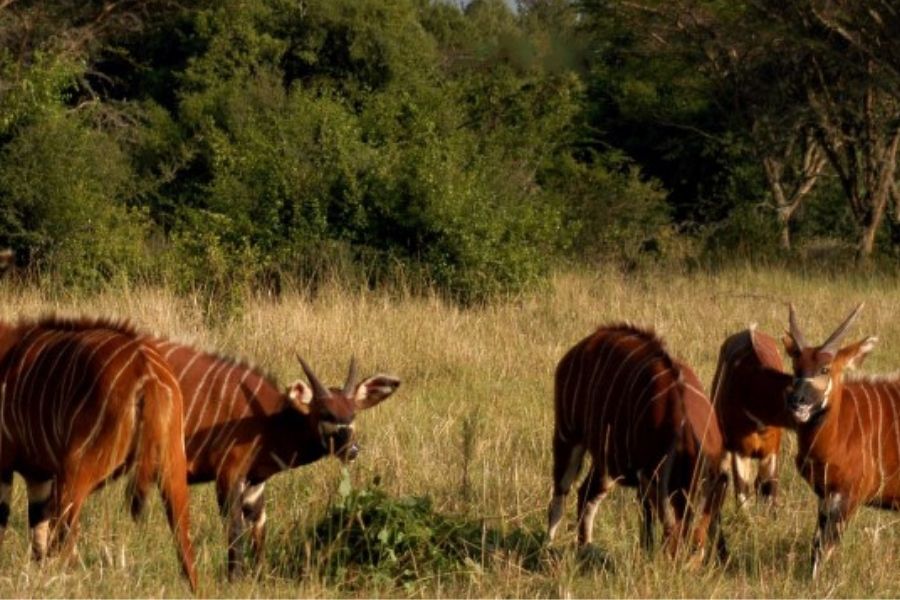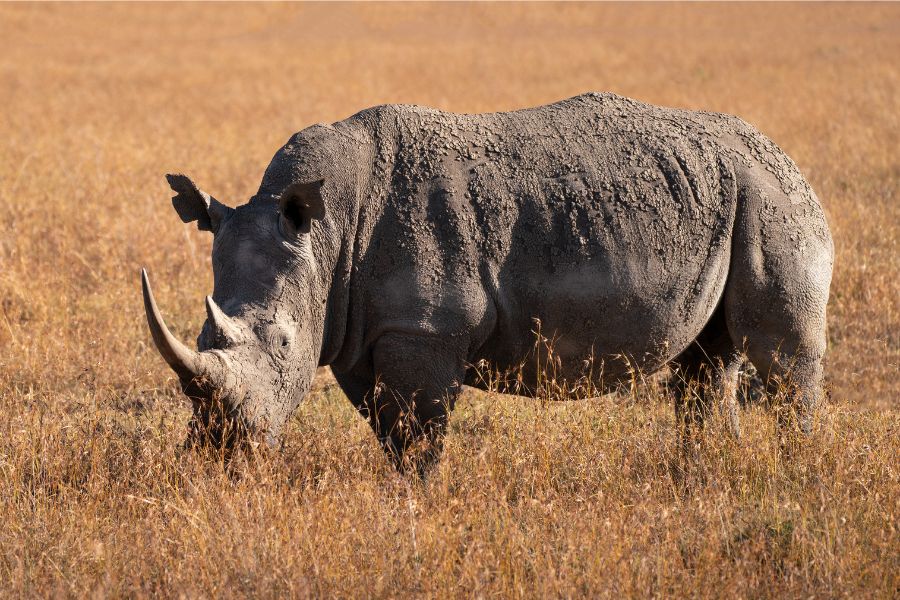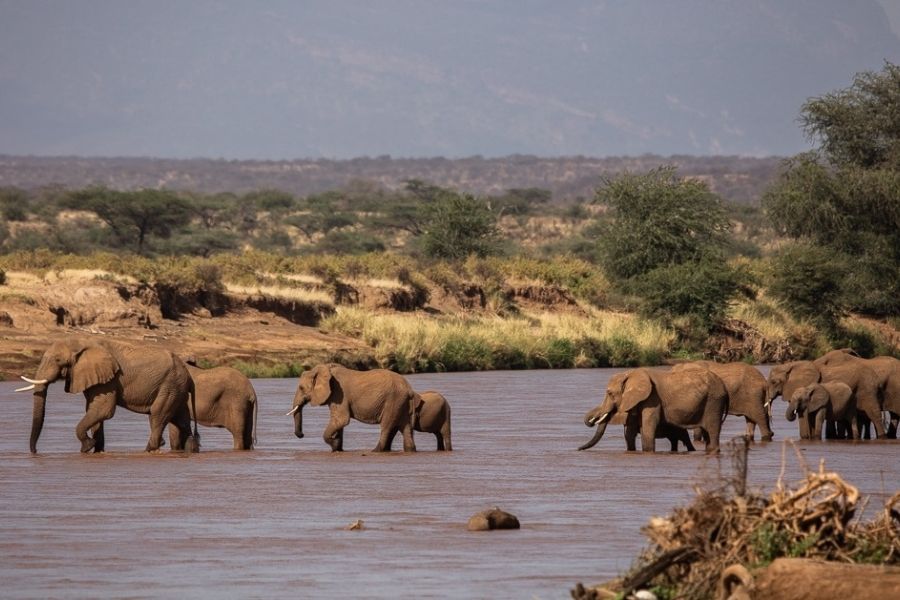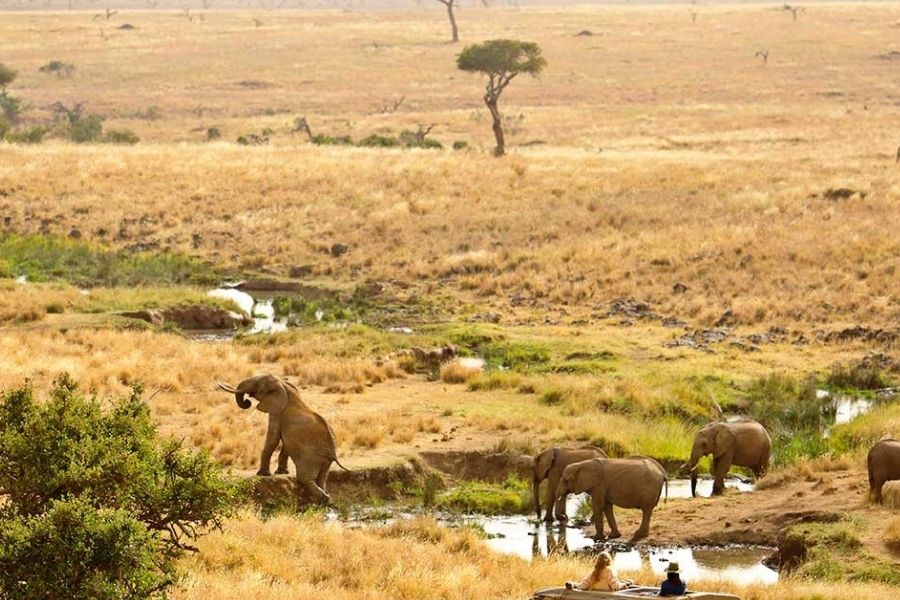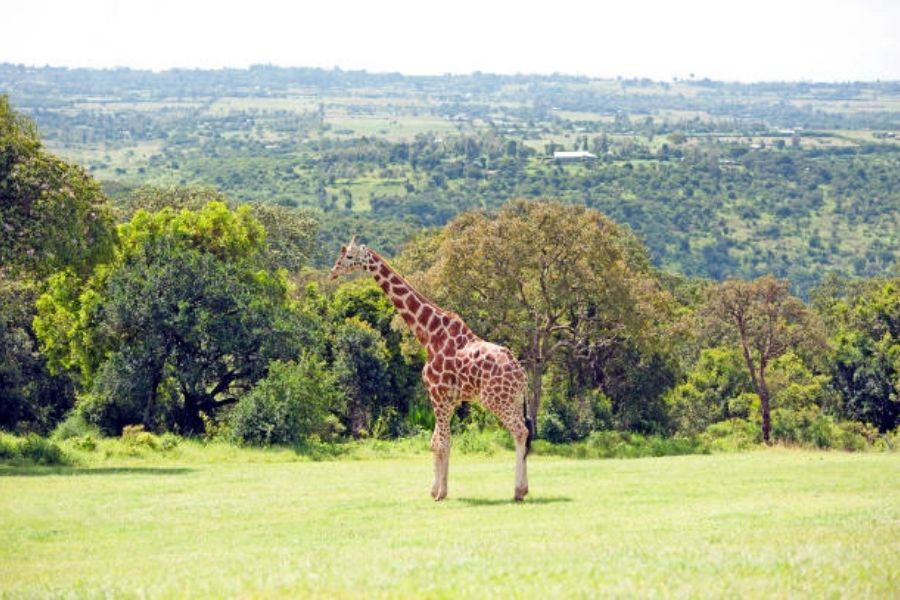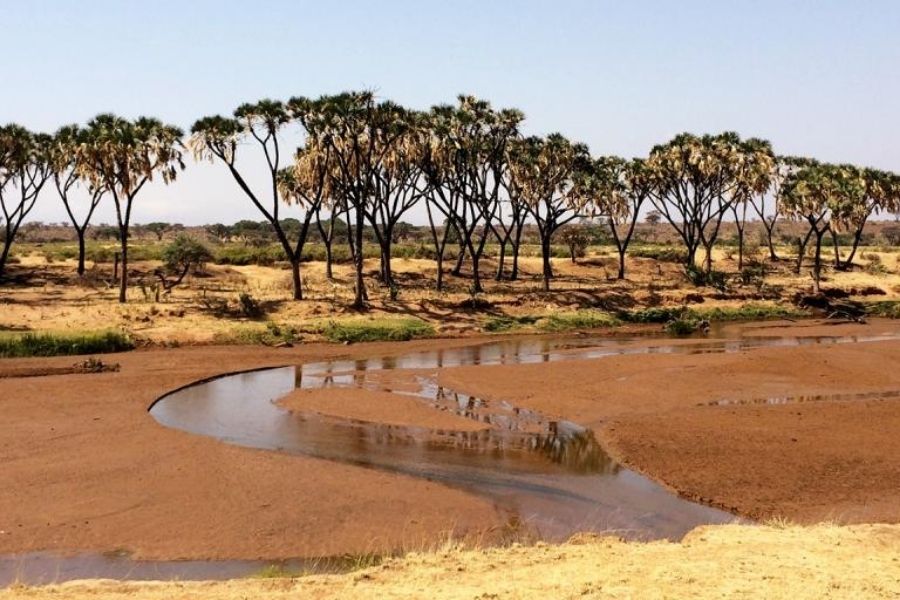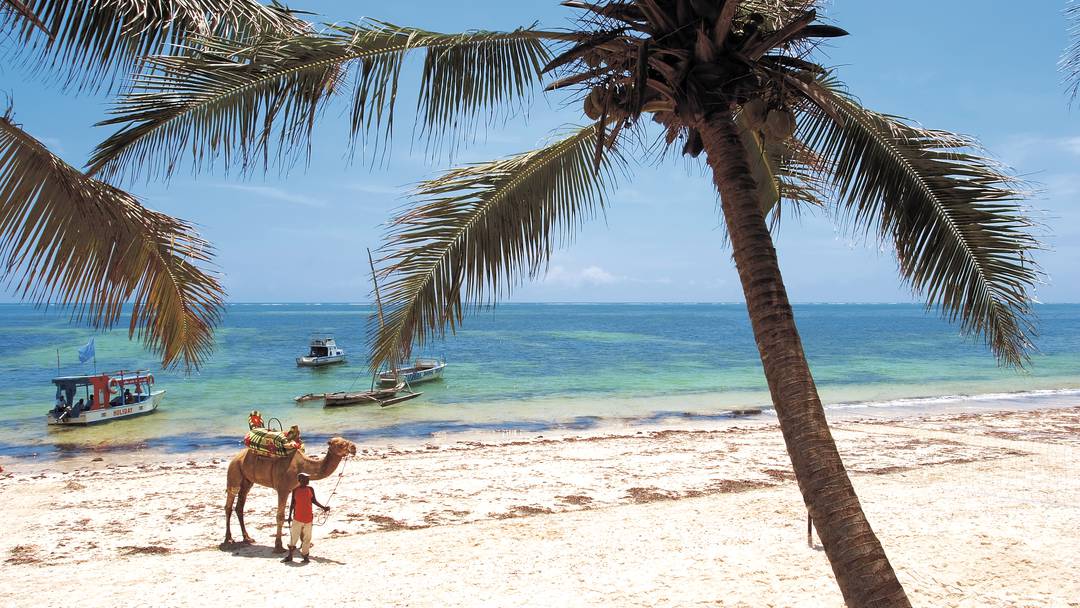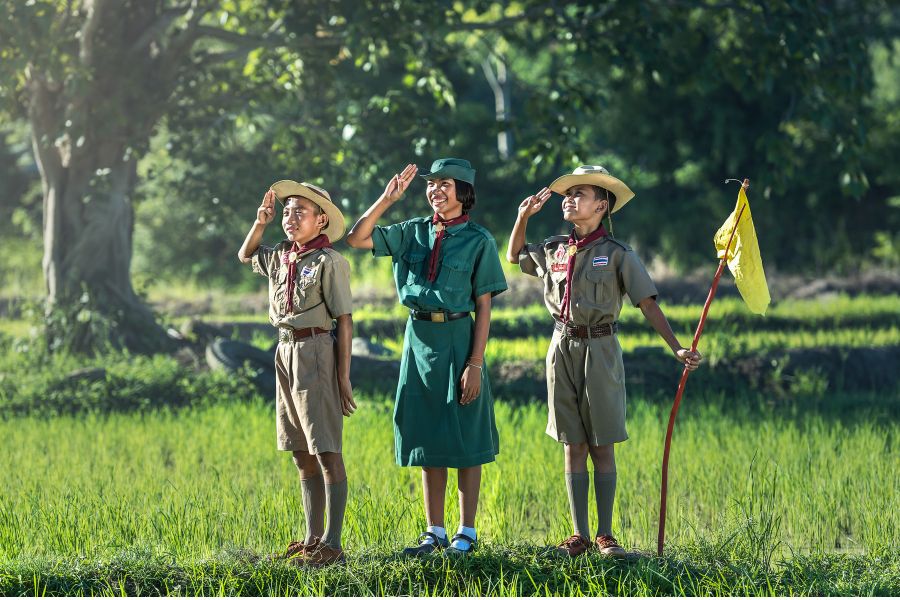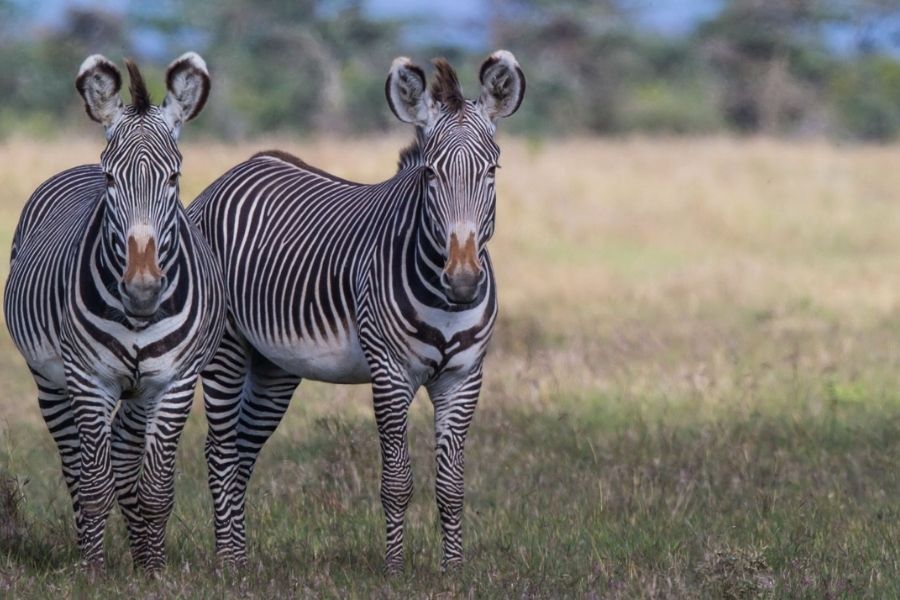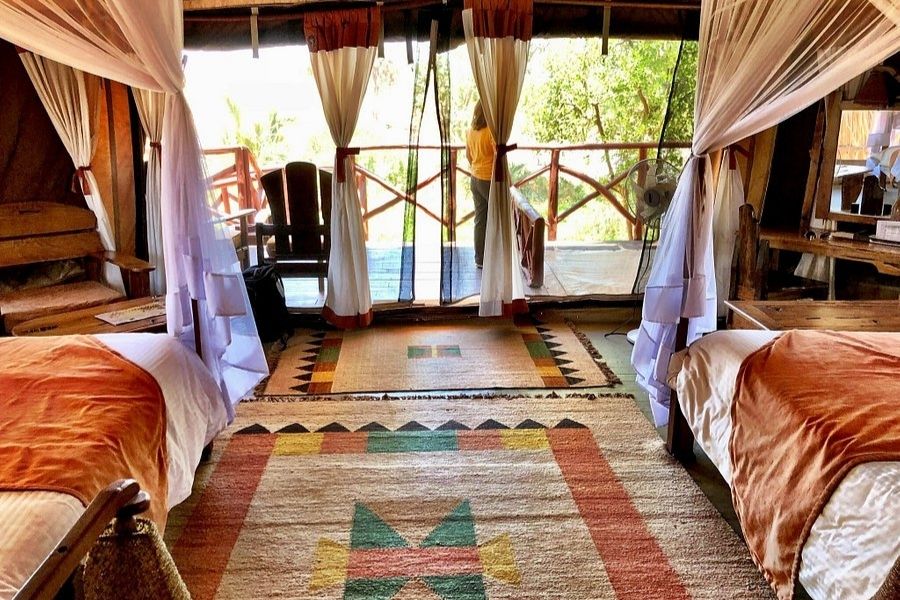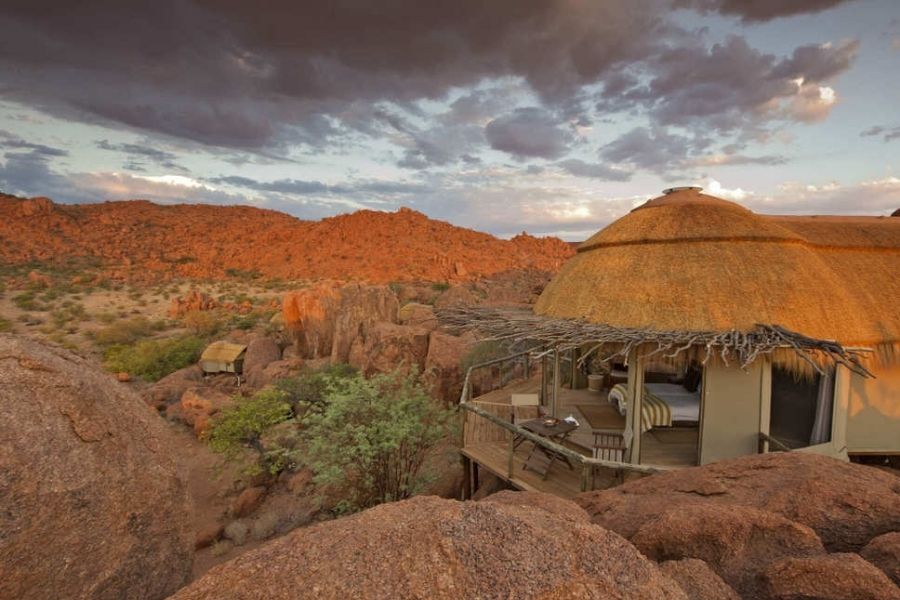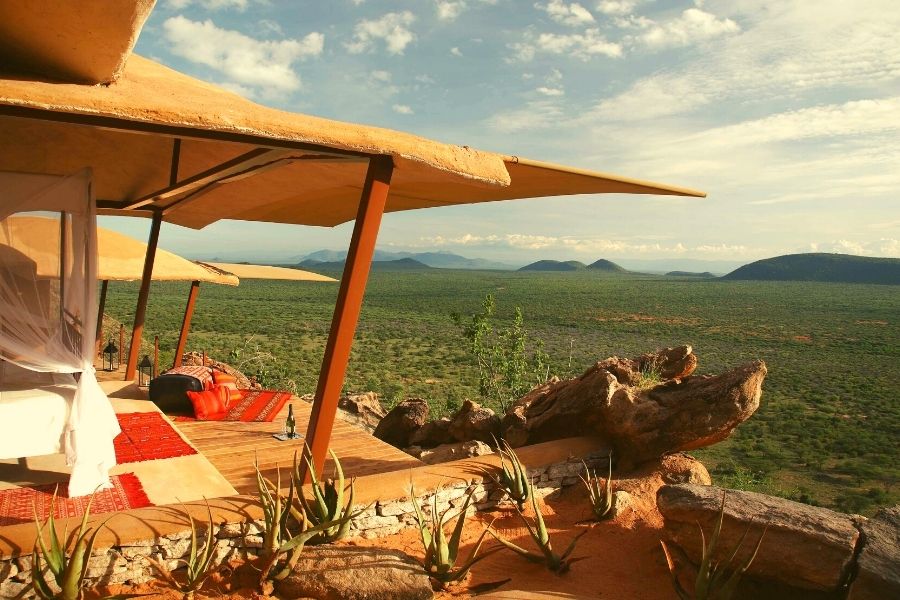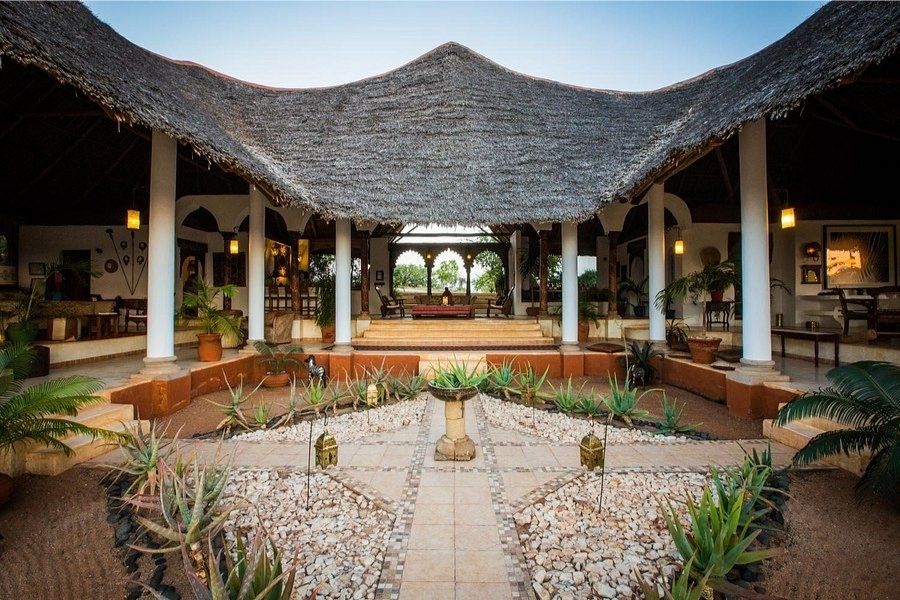SAMBURU NATIONAL RESERVE SCENERY:
The reserve comprises riverine forests along the water, transitioning to dry acacia scrub peppered with termite mounds. The riverine forests support a variety of wildlife, including birds, baboons, and monkeys.
The dry acacia scrub is home to various animals, such as elephants, lions, leopards, and cheetahs. Samburu National Reserve is situated in the southeastern corner of Samburu District in the Rift Valley Province, approximately 345km from Nairobi.
The reserve is located in a remote area, making it a perfect escape from the hustle and bustle of city life. Samburu National Reserve experiences an arid and semi-arid climate. The days are scorching, while the nights are cool, providing a welcome relief from the heat.
The mean annual temperatures range between 18°C and 30°C, and the mean annual rainfall is 354mm, with peaks in November and April. The dry season lasts from late May to early October, the most popular time to visit the reserve.
The reserve is home to rare northern specialist species like Grevy's zebra, Somali ostrich, reticulated giraffe, gerenuk, and Beisa Oryx (Samburu Special). The reserve boasts a minimum of 900 elephants.
Large predators like lions, leopards, and cheetahs are a vital attraction, with Kamunyak, the Miracle Lioness that adopted the baby Oryx, being a resident in the reserve. Birdlife in the reserve is abundant, with over 450 species recorded, such as the Somali ostrich, the world's most giant bird.
The lesser kestrel and the Taita falcon are species of global conservation concern in the reserve. Five species categorized as vulnerable have been recorded in the reserve. These are the African darter, great egret, white-headed vulture, martial eagle, and the yellow-billed oxpecker.
The critically endangered species under CITIES, the Pancake tortoise (Malacochersus tornieri), is also found in the reserve. Samburu National Reserve can be visited year-round, but wildlife watching is usually best in the dry months, from June to October and December to March.
During these months, the vegetation thins out, and animals gather around the few remaining water sources, making it easier to spot them. It is wise to avoid the height of the wet seasons (November, April, and May).
During these months, spotting wildlife (which has spread out anyway with water availability) in the long grass is more challenging. Samburu doesn't receive much rainfall, so that it can be visited any month; the most productive time of year for watching wildlife is during the dry season (June to October).
The wettest month is April, and rains at this time can make wildlife watching more challenging. In conclusion, Samburu National Reserve is an excellent destination for wildlife enthusiasts who want to experience the natural beauty of Kenya while enjoying a unique and unforgettable safari experience.
With its stunning landscape, abundant wildlife, and outstanding climate, Samburu National Reserve is a must-visit destination for anyone interested in exploring Kenya's natural beauty.
ACTIVITIES.
ACTIVITIES.
Samburu National Reserve is a true haven for nature enthusiasts, offering many exciting activities that will leave you spellbound. Embark on an exhilarating game drive and marvel at the sight of the Big Five and other magnificent wildlife species such as the Grevy's zebra, Somali ostrich, and reticulated giraffe.
As you traverse the vast savannah grasslands and the winding riverine forests, your expert guide will provide insightful commentary on the different animal behaviors and habitats. For a more immersive experience, you can opt for a guided nature walk where you can explore the reserve's rich biodiversity up close.
As you trek through the scenic trails, you'll encounter a variety of flora and fauna, from towering baobab trees to colorful bird species. Keep your eyes peeled for the elusive leopard or the playful baboons that call the reserve home.
To glimpse the local Samburu culture, don't miss the chance to visit a traditional village and interact with the friendly residents. Learn about their unique customs and way of life, and witness mesmerizing traditional dances and songs.
If you're an avid birdwatcher, you'll be delighted to know that Samburu National Reserve is home to over 450 bird species. Grab your binoculars and spot the stunning African fish eagle, the vibrant lilac-breasted roller, or the rare vulturine guineafowl.
Finally, for the adventurous at heart, the Ewaso Ng'iro River offers a variety of exciting activities, such as camel safaris, river rafting, and fishing expeditions. Samburu National Reserve has got you covered whether you're looking for a serene fishing experience or a heart-pumping adrenaline rush.
HOTELS AND ACCOMMODATIONS.
Nestled in the heart of Kenya's rugged northern wilderness, Samburu National Reserve is a breathtaking destination that offers visitors a chance to experience the beauty and diversity of African wildlife up close.
If you plan a trip to this stunning reserve, you'll need a comfortable and convenient place to stay. Luckily, plenty of accommodations and hotels in the area cater to a range of tastes and budgets.
From luxurious lodges that offer world-class amenities and stunning views of the surrounding landscape to cozy guesthouses that provide a more intimate and authentic experience, there's something for everyone.
Some of the most popular options include Saruni Samburu, a boutique lodge that offers panoramic views of the reserve and a range of activities such as game drives and bush walks; Samburu Intrepids Tented Camp, a family-friendly camp that features spacious tents with private verandas and a swimming pool; Elephant Bedroom Camp, a luxurious tented camp that overlooks the Ewaso Nyiro River and offers guided nature walks and cultural visits to local Samburu villages; and Sasaab Lodge, a stylish and secluded retreat that boasts a spa, infinity pool, and stunning views of the Laikipia Plateau.
No matter which option you choose, you will have an unforgettable experience in this magical corner of Kenya.

